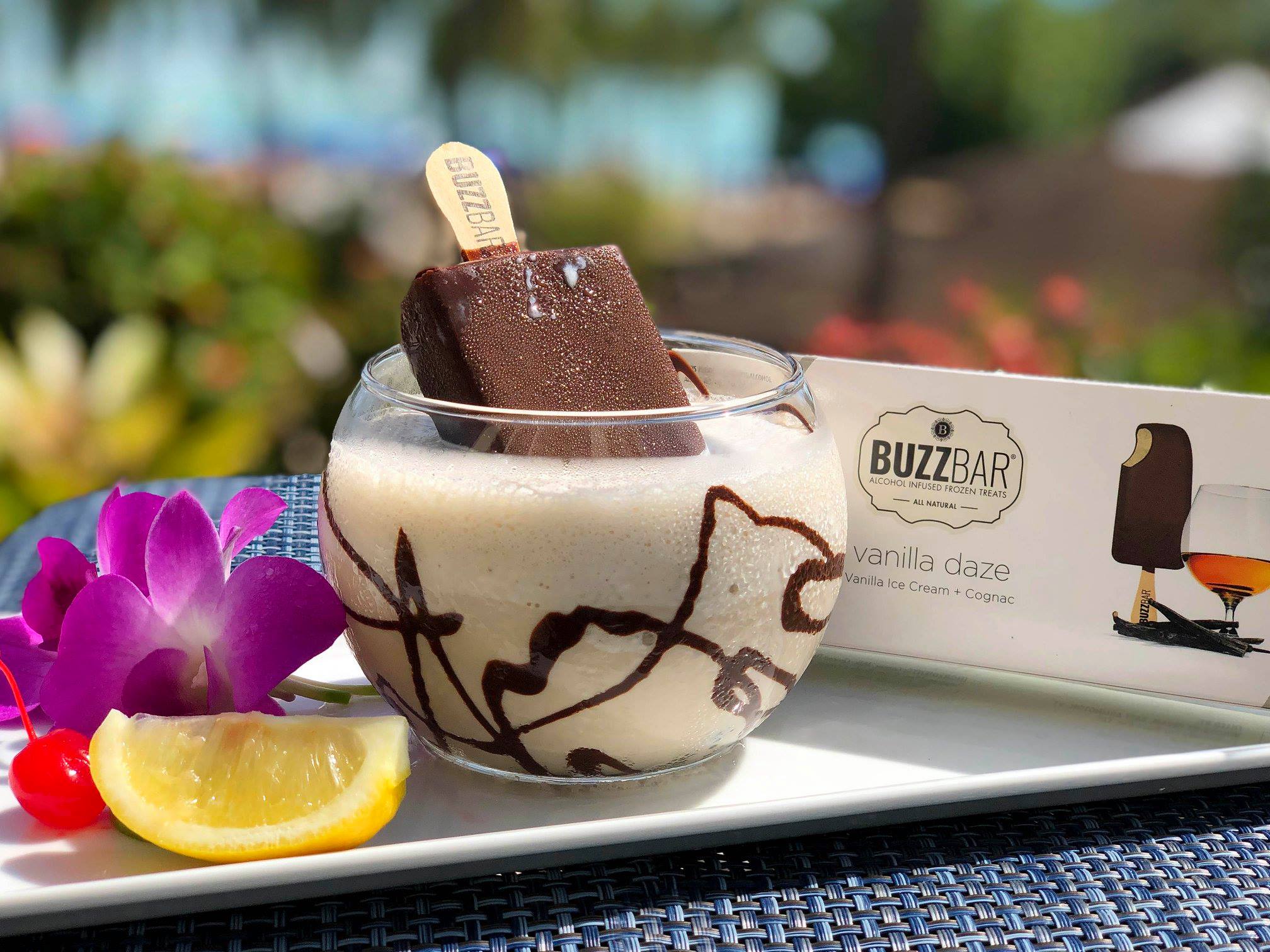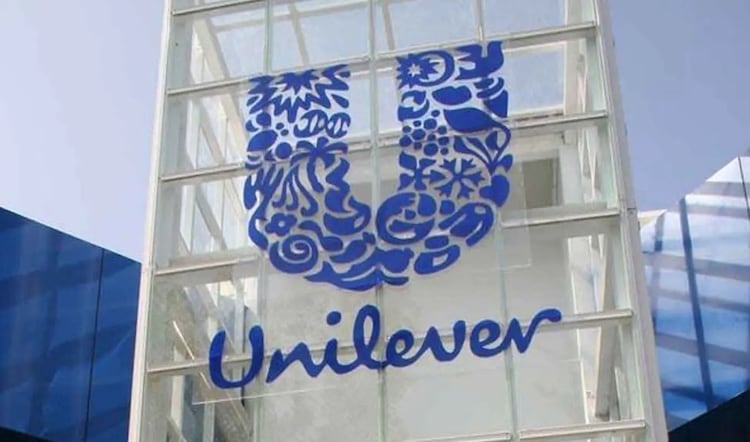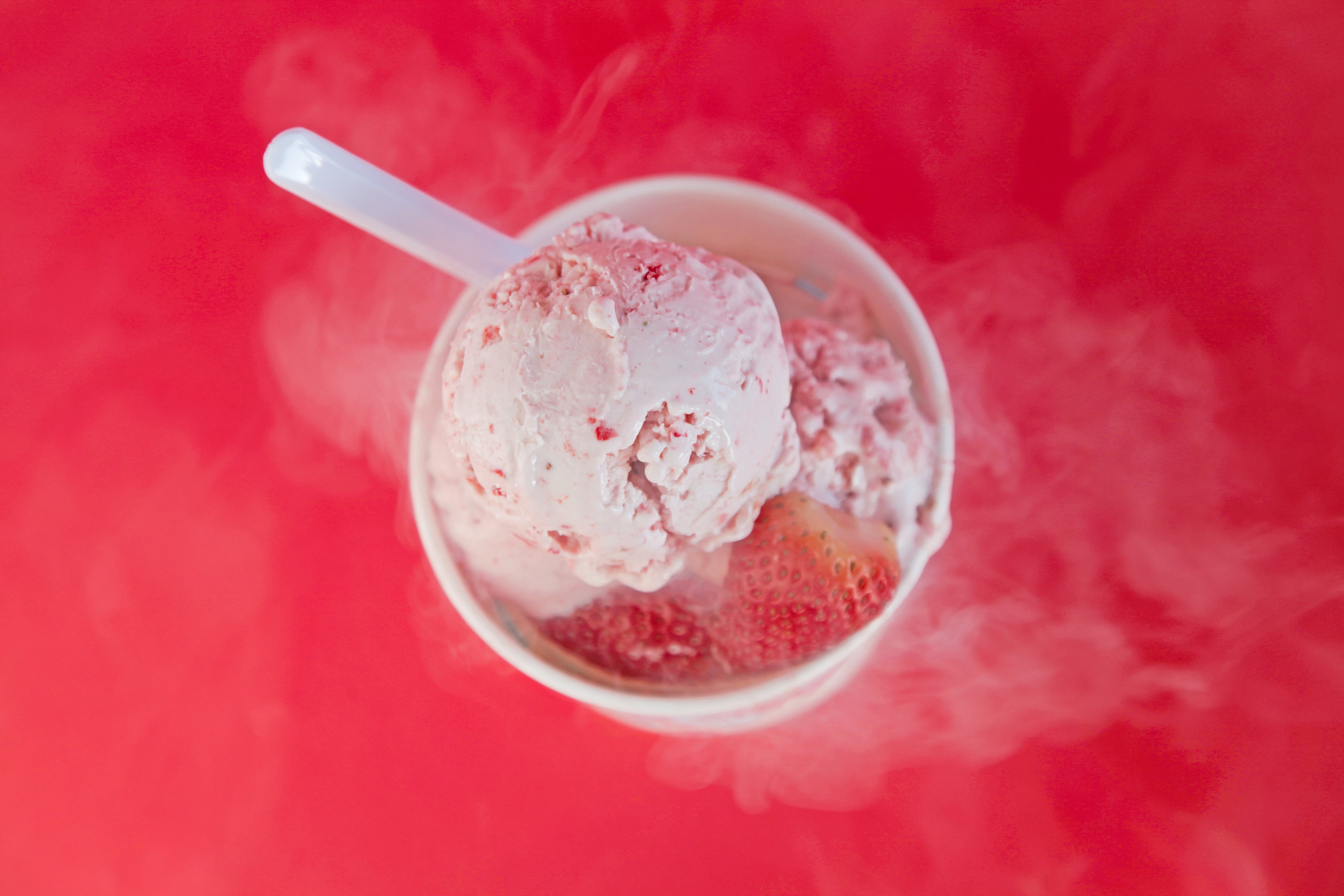Alcohol-infused ice cream is a small but high-growth segment, according to multiple market research agencies. The global category is valued at around $1.5bn with a CAGR of between 6% to more than 7.2% and offers a raft of commercial opportunities for those willing to tap into it – from branded collaborations to premium pricing and positioning.
But while the idea of combining two of the most widely enjoyed foods sounds enticing, challenges remain around formulation, distribution and catering to changing consumer trends.
We spoke to representatives from two US companies to find out what dictates their market strategies.
“The category continues to experience strong year-over-year growth, with Summer 2025 projected to be the biggest sales season yet,” BuzzBar Ice Cream chief executive Randy Freeman told us.
BuzzBar – which offers alcohol-infused ice cream bars and sorbets – prices a 12-pack at around $170 (around $6 per bar) and sells D2C or via partnerships with bars, restaurants and events, such as Mattel-owned chain American Girl Café.
The company’s products are free from artificial additives and each flavor features a distinct ABV percentage (ranging from 2.05% to 3.9% per 3.4 fl oz / 100ml popsicle) while maintaining ‘a smooth, natural freeze’.
“As in-person events increase, so does the demand for indulgent, Instagram-worthy desserts,” Freeman added. “Restaurants, hotels, and bars are seeking unique, eye-catching offerings.”
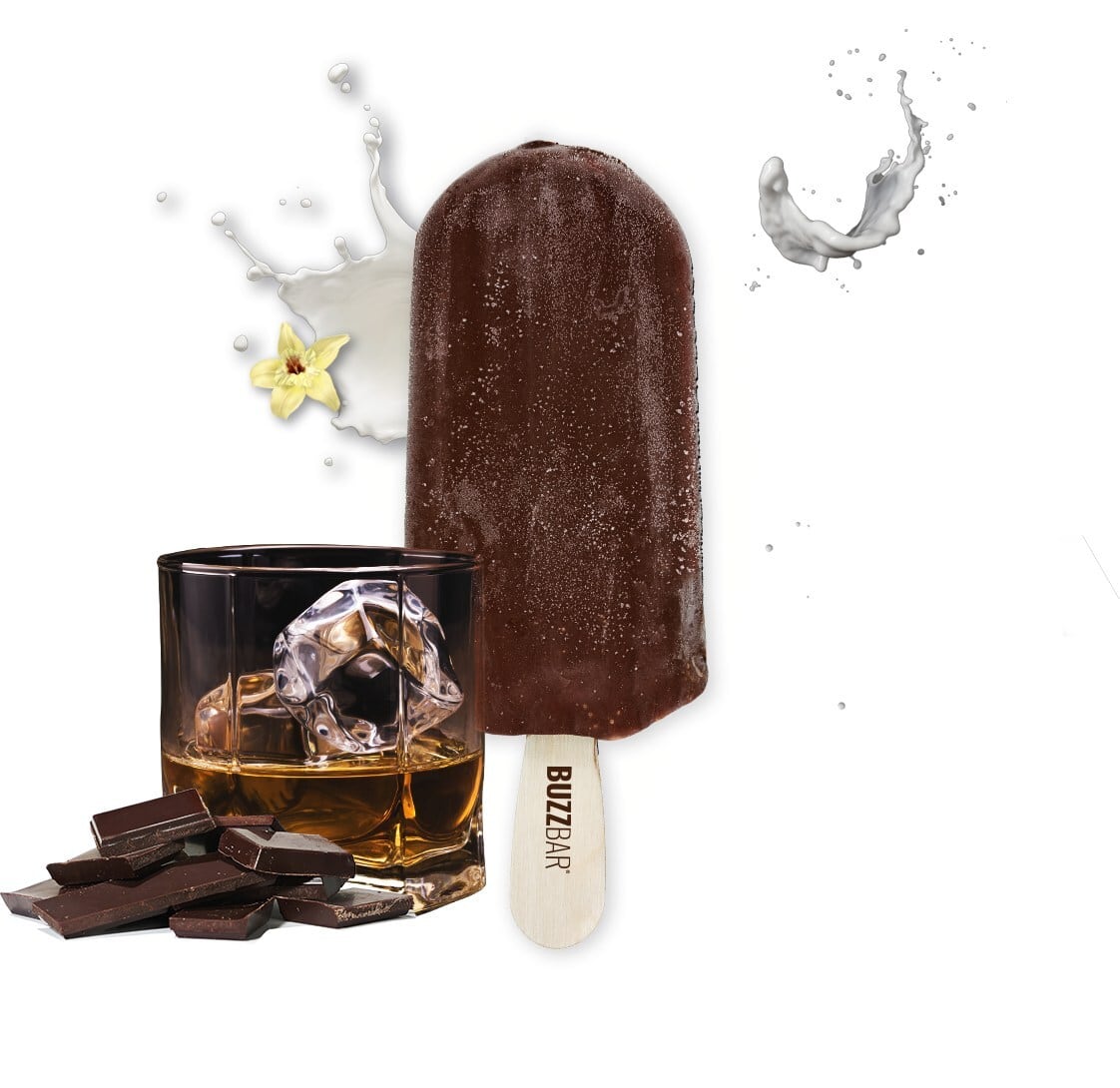
Alcohol-infused ice creams can elevate cocktail occasions, he told us, making the category suitable for on-trade premises as well as in-home snacking. Meanwhile, alcohol-infused ice cream is mostly enjoyed by younger generations, including Millennials and younger Gen Xers – which together account for around 36% of all in-home snacking in the year ending March 2024, according to Circana SnackTrack data.
In terms of consumer profile, BuzzBar’s largest demographic is women aged 21-45.
Younger women are typically more open to trying indulgent treats, alcohol-infused ice cream maker Tipsy Scoop also found.
“Our average consumer is 25-44, mostly female (77% to 23%), living in a moderate-sized to major city,” said Rachel Chitwood, VP of Marketing at Tipsy Scoop. “Our consumer prefers to spend their expendable income on social media-worthy culinary experiences – craft cocktail bars, the latest trendy dessert spot – and seeks out new places as a means of connecting with friends and colleagues.”
There’s scope to attract more male consumers to the category – industry research cited by Tipsy Scoop found a near-equal split between the two genders when it comes to attitudes towards indulgent desserts.
“Dessert industry research shows that while younger women are the most pro-indulgence when it comes to desserts, 55% of women and 45% of men want to feel like they’re indulging when treating themselves to desserts,” Chitwood added.
What makes boozy ice cream attractive?
The category is distinct through its premium positioning, cocktail-inspired flavors and higher alcohol content than the typical pint of rum & raisins shoppers found at the supermarket.
“While we do have some menu options that are inspired by classic ice creams –Spiked Mint Chocolate Chip, Cake Batter Martini – we specialize in more grown-up offerings,” Tipsy Scoop’s Chitwood told us. “Our ice cream is made with 16% milk fat, which puts it in the Super Premium category. Additionally, alcohol lowers the freezing point, making the consistency of our ice cream creamier: more like the gelato.”
But the main difference is alcohol content. “Our ice cream does actually contain an alcohol content of up to 5% ABV,” Chitwood explained. “So while many brands have a Rum & Raisin and some a whole spirit-inspired line, those do not actually retain an alcohol content. All of our flavors have been federally lab-tested and ring in at up to 5% ABV.”
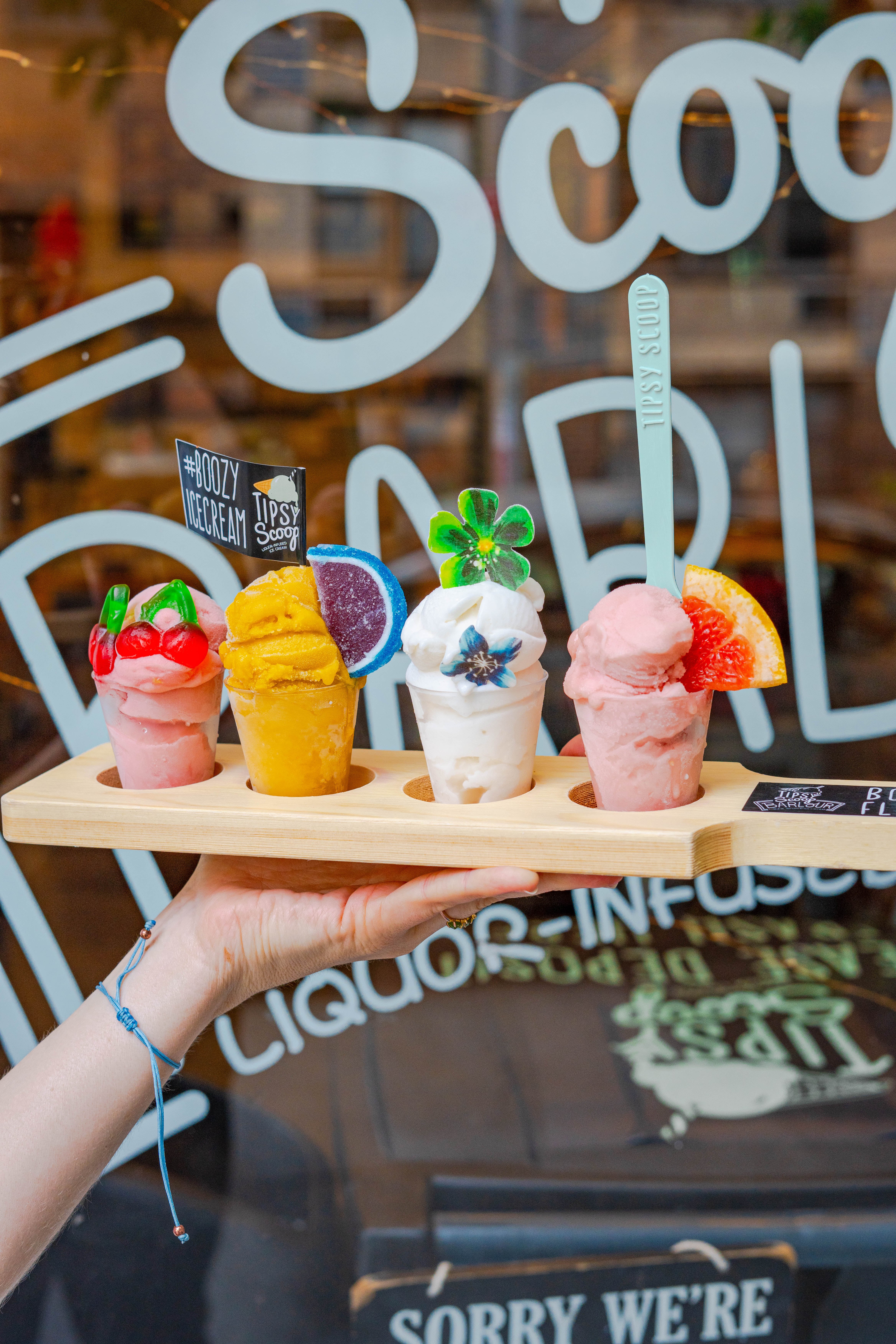
Flavor is also king – with beverage trends, presentation and seasonality playing major roles in NPD.
“We offer a variety of flavors inspired by popular cocktails, with our Merlot Berry, Pineapple Buzz, Majestic Mango and Citrus Berry Drop being among the favorites,” BuzzBar’s Freeman said.
Tipsy Scoop’s Chitwood added: “All of our flavors combine the nostalgia of a scoop of ice cream with the grown-up indulgence of a craft cocktail.
“Consumers are delighted by flavors like Spiked Mint Chocolate Chip and Cake Batter Martini because they take a flavor they love from growing up and give it a boozy twist.”
Rachel Chitwood, Tipsy Scoop
“A couple of summers ago, we made a seasonal Vodka Cotton Candy ice cream, and we still have regulars asking to bring it back – just the smell of cotton candy immediately transported them to a simpler time,” she added.
As for new product development, BuzzBar’s innovation is guided by multiple factors, including the company’s own creative vision as well as collaborations with mixologists and chefs, as Freeman explained.
For Tipsy Scoop, popular holidays, industry partnerships and new franchise locations are all important factors in new flavor development.
“Our consumer can always expect to see a new Irish whiskey flavor for St. Paddy’s, tequila flavor for Cinco de Mayo, and four new festive flavors for the holiday season,” Chitwood said.
“Our products are also inspired by the brands we get to partner with. When Miller High Life came to us with an idea for a dive bar-inspired ice cream pop infused with liquid smoke, pop rocks for carbonation, and gooey caramel to connote a sticky bar room floor, we immediately said, ‘Challenge accepted!’”
How important are the latest beverage alcohol trends for ice cream NPD? “? Very important,” Chitwood said.
“As tequila and other agave-based spirits continue to climb in popularity, we make sure our menu always has at least one new, creative margarita-inspired flavor. As we saw the increasing popularity of Dry January and low and no ABV cocktails, we partnered with Lyre’s to make four 0% ABV flavors inspired by popular cocktails – Amalfi Spritz, Espresso-no Martini, Virgin Pina Colada, and Salty Mocktail Margarita.”
Regulation and distribution
Alcohol regulation is one area that requires additional attention from brands in this space. In the US, where both companies we interviewed operate, the biggest challenge is that alcohol is regulated state by state. This complicates both distribution and franchising.
“Our flavors have been approved by the TTB as non-beverage food products and are not governed by the Federal Alcohol and Tobacco Bureau, but are considered food,” Chitwood explained.
“As close as New Jersey, retailers must have a liquor license to sell our products, making the cost of franchise ownership in that state considerably higher. In Georgia, every county has its own laws regulating alcohol.
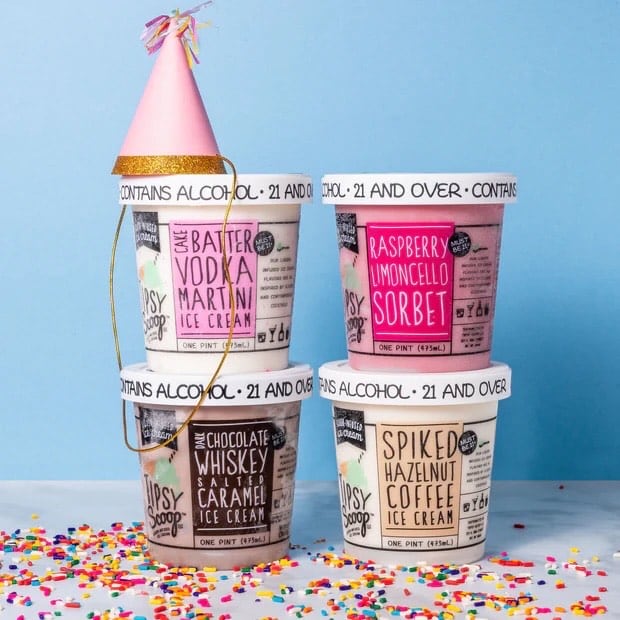
“As we prepared to enter the franchising process, our legal team extensively researched the liquor laws in each state so we could vet which cities were viable for a location.”
The intricate and varying liquor laws also complicate partnership opportunities and retail availability, she added. “Every liquor brand has a different set of partnership stipulations and guidelines to protect the brand legally. While retailers in many states are not legally allowed to carry our ice cream, even those who can are wary about selling a product that appeals to children but contains alcohol.”
Some have a more basic concern – such as where to place the ice cream in their store, Chitwood said. “Consumers aren’t expecting alcohol in the freezer aisle, but there aren’t freezers in the beer aisle, so where does it fit?”
BuzzBar chief executive Randy Freeman echoed the sentiment. “Alcohol distribution laws vary by state, requiring careful navigation with each new partnership and location. Compliance is a key part of our operations,” he told us.
The future: expansion & innovation
For both ice cream brands, growing their footprint and building on their flavor offer will be key priorities in the year ahead. “As we gear up for significant growth in 2025, we’re expanding our reach by building relationships with new locations –restaurants, hotels, stadiums, movie theaters, and music festivals,” BuzzBar’s Freeman told us. “Innovation and expansion are at the heart of our strategy.”
“Our goal is to increase retailer distribution and open new brick-and-mortar locations in as many cities within the US and abroad as possible,” Tipsy Scoop’s Chitwood added.

